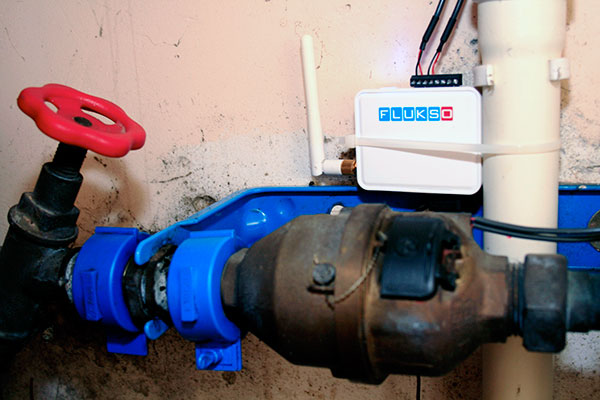The current application of Flukso lies in the monitoring of electricity consumption and photovoltaic production. From the very start though, there has always been the desire to monitor all household flows (hence the Flukso name). Monitoring electricity just seemed more straightforward and definitely less intrusive than monitoring resources like water or heating.
That is, until one of our 'Fluksonians' (thanks Michel!) pointed me to Lieven's water and gas meter hacking experiments at lika.be. Lieven uses a Hall-effect switch which can either be inserted in the water meter's drilling or glued to the gas meter. When such a Hall-effect sensor is located close enough to the meter's rotating magnet, a clean pulse can be derived from the sensor. This allows the sensor to be coupled to a modified Fluksometer, with an extra output for powering the sensor. This is why you find two cables connecting the Hall sensor to the Fluksometer in the picture below.
 Water metering with a hall switch
Water metering with a hall switch
This means we now have experimental support for water metering. Yay! Well, at least for a certain popular type of water meter in Belgium. I am interested in finding out whether this approach works with other types of water meters as well. Post a comment or contact me directly if you're interested in tinkering with your own water meter.
Again, kudos to Lieven for devising this elegant water and gas measurement hack! It allows us to re-purpose the utility meter to our own needs in a non-intrusive, non-seal-breaking and robust way. We might even not be voiding our warranty this time.
 We've had a spike in orders lately, including some sizable ones. A big thanks to all of you!
We've had a spike in orders lately, including some sizable ones. A big thanks to all of you!



